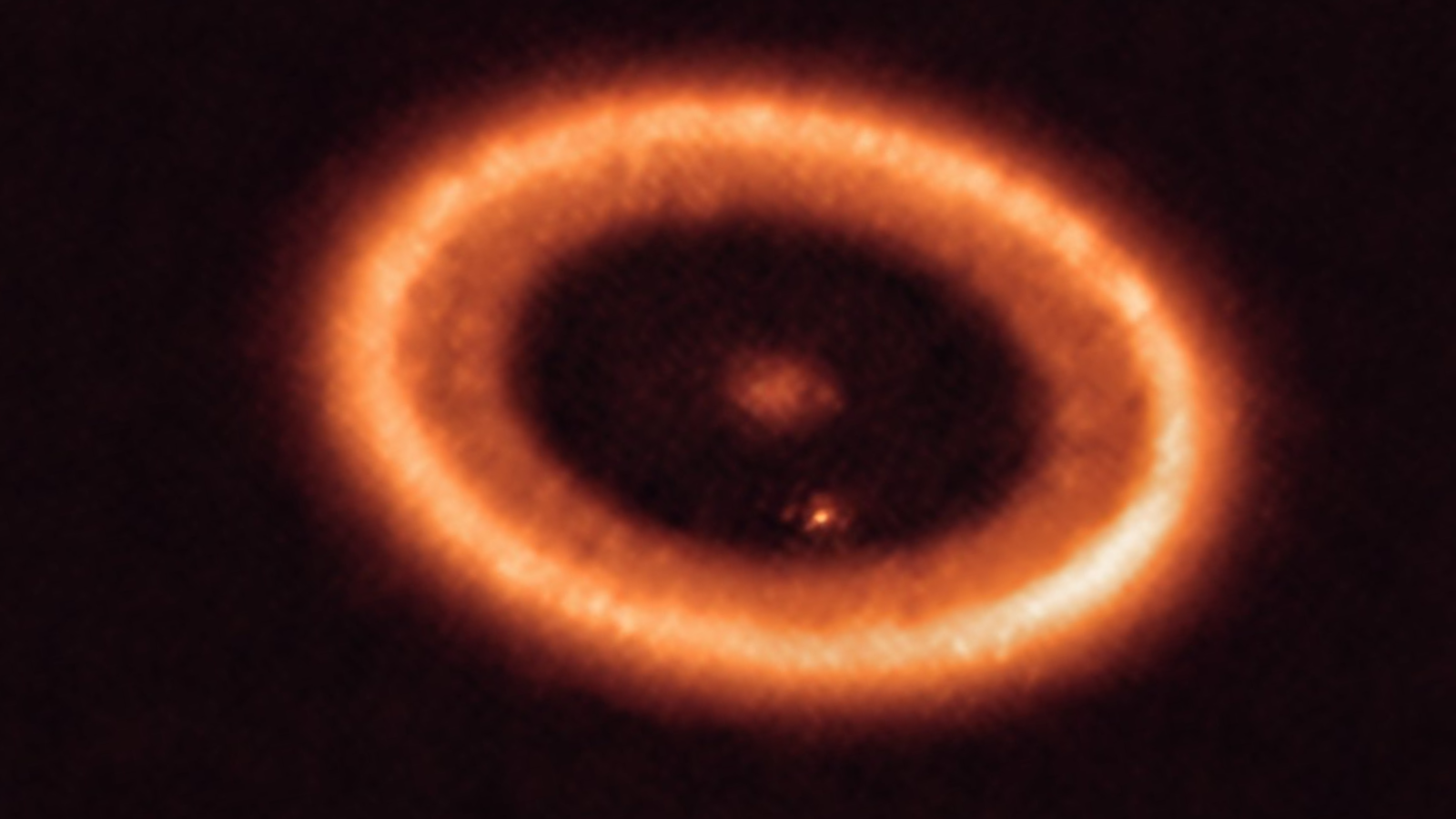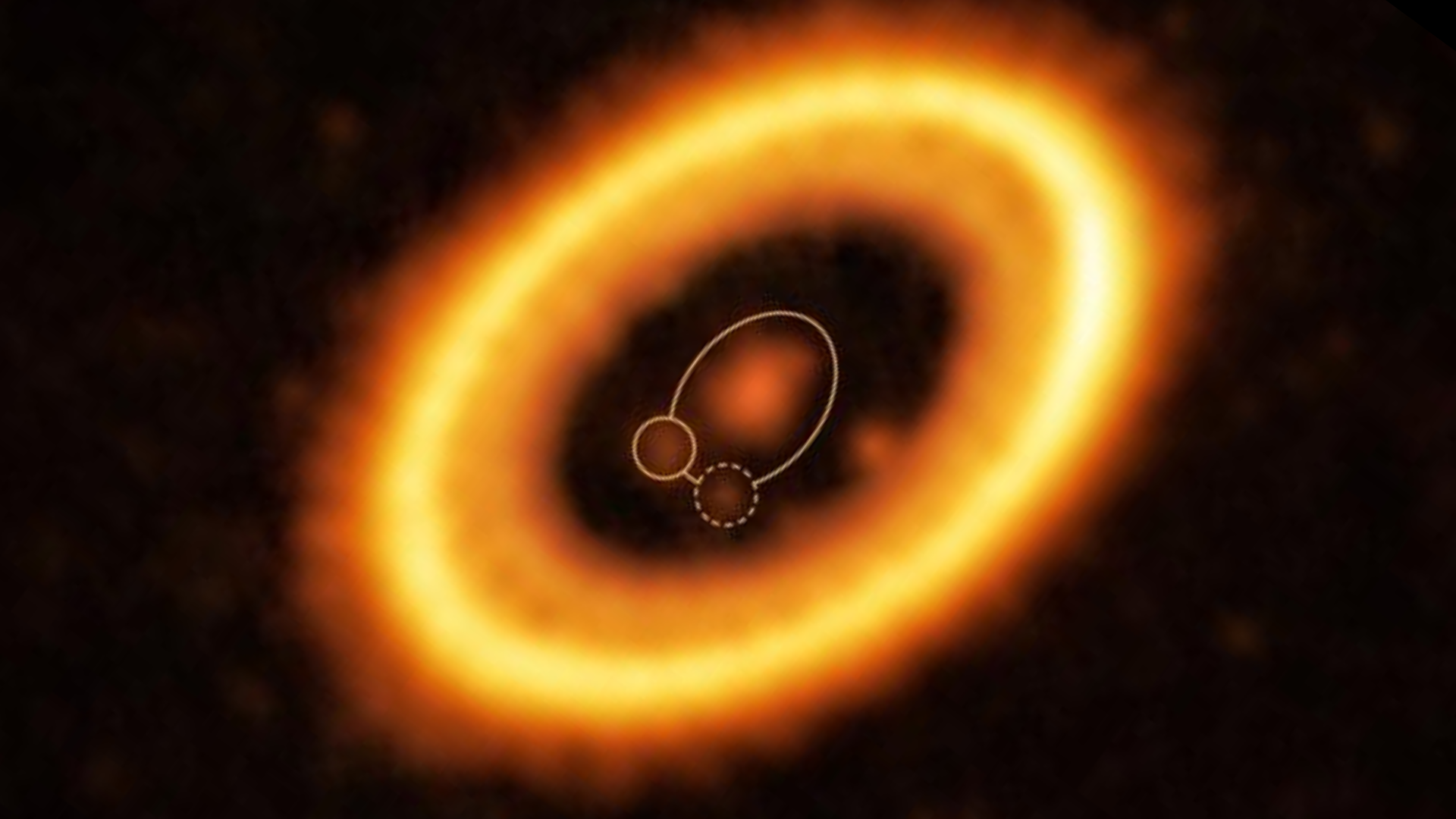James Webb Space Telescope spots hints of exomoons forming in infant star system
"PDS 70 is special as it is the only protoplanetary disk so far where all astronomers agree that we have found forming planets caught in the act."

Three definitely isn't a crowd for planets around a distant infant star.
Astronomers had already discovered two planets forming in the disk of gas and dust, or protoplanetary disk, around the infant star PDS 70. Now, using the James Webb Space Telescope (JWST), astronomers with the MIRI mid-infrared Disk Survey (MINDS) project have seen hints of a third world taking shape around the fledgling star located around 400 light-years from Earth.
In addition to this, using JWST's Near Infrared Camera (NIRCam), the MINDS crew also saw a large spiral stream of material feeding the growth of one of the previously discovered planets, PDS 70C. This giant planet is already surrounded by its own disk of material, which is also being fed by this stream and is expected to birth moons.
Related: The youngest exoplanet found by the Hubble telescope is the size of Jupiter (and still growing)
"We found new evidence for the presence of a third planet in the system, which was proposed based on VLT observations," Valentin Christiaens, MINDS team member and postdoctoral researcher in astrophysics at KU Leuven and the University of Liège, told Space.com. (The VLT is the Very Large Telescope, which is operated by the European Southern Observatory in Chile.)
"Furthermore, the new infrared measurements we obtained for the two known protoplanets suggest the presence of heated material around them — which may be the building blocks for moons forming around them," Christiaens added.
The PDS 70 system has already been well-studied by a plethora of telescopes, including the ground-based Atacama Large Millimeter/submillimeter Array (ALMA) and the VLT.
Breaking space news, the latest updates on rocket launches, skywatching events and more!
It remains a fascinating system for astronomers because the protostar and its protoplanetary disk are estimated to be no older than 5.5 million years — a cosmic infant compared to our 4.5-billion-year-old solar system.
"PDS 70 is special, as it is the only protoplanetary disk so far where all astronomers agree that we have found forming planets caught in the act," Christiaens said. "Detailed study of this system has thus allowed us to learn a lot about planet formation."
The researcher said that little is known about the properties of the potential third planet around PDS 70 thus far. The planet — which, if confirmed, would be designated PDS 70D — appears to be shrouded in a vast amount of dust, and it orbits its infant star at around 13 times the distance between Earth and the sun.
"What is interesting is that this separation places it near 1:2:4 mean-motion resonance with planets PDS 70B and PDS 70C. This means its orbit would be almost exactly twice as short as B and four times shorter than planet C, respectively," Christiaens said. "This is a situation we know in the solar system with the three innermost Galilean moons of Jupiter: Io, Europa, and Ganymede."
Spiral accretion streams like the one spotted by the team have been previously predicted theoretically in the protoplanetary disks around young stars. Signals of these streams have even been seen in other young systems. Yet this new discovery still stands out, team members said.
"It’s the first time that we can directly connect this feature to a forming planet," Christiaens said. "This may suggest that some of the spirals observed in other protoplanetary disks may also be associated with forming planets. Thus, these findings have led to an increased suspicion that spirals observed in other disks may very well also be directly connected to planets embedded in their disk."
Related: Planets can form much faster than thought, new ALMA telescope photos suggest
The detection of PDS 70D is not set in stone; Christiaens said that more observations of this system will be required before full confirmation is made. That isn't bad, considering that the researcher wasn't convinced the planet was there to begin with!
"The most surprising aspect to me was certainly finding this signal consistent with a third planet, as I was originally very suspicious about the original claim made in the first work — I thought the signal may have been tracing the tip of the inner disk," he said.
When the researchers applied their best image-processing algorithms, they saw an extra signal in their images, which did not seem to correspond to the disk or to the other known planets. This signal also happens to be where they’d expect the candidate proposed earlier to be now, if that signal indeed traces a planet moving in its orbit.
"The third planet was first detected in ground-based observations. We did not expect to re-detect it," Christiaens said. "It was not the original goal at all of this observation to confirm it!"
And the team has more JWST observations of the PDS 70 system to analyze.
"In the mid-term future, it will be a very interesting system to follow up with the Extremely Large Telescope (ELT), in particular, to confirm and potentially characterize the third planet candidate," Christiaens concluded. "This could help us better understand the composition of the forming planets and the properties of the material around the planets, the building blocks for potential moons."
The MINDS team's research was posted recently on the online paper repository arXiv.

Robert Lea is a science journalist in the U.K. whose articles have been published in Physics World, New Scientist, Astronomy Magazine, All About Space, Newsweek and ZME Science. He also writes about science communication for Elsevier and the European Journal of Physics. Rob holds a bachelor of science degree in physics and astronomy from the U.K.’s Open University. Follow him on Twitter @sciencef1rst.

